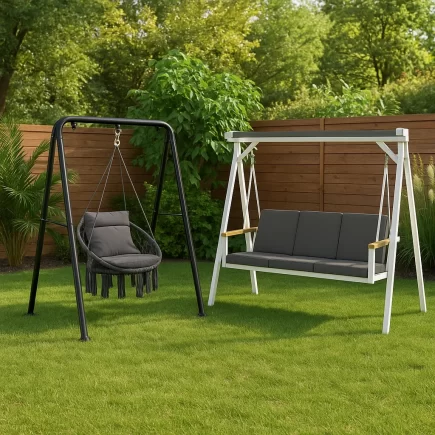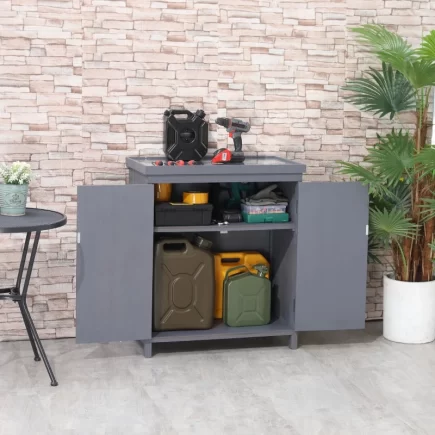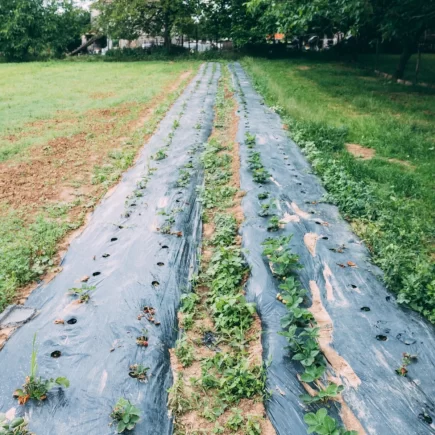Raised garden beds are a game-changer for home gardeners. Whether you’re a novice or an experienced gardener, raised beds offer numerous advantages over traditional ground-level gardening. They allow you to control your soil, prevent soil compaction, and create a more accessible gardening environment. However, maintaining a raised garden bed requires regular attention and care. Proper maintenance ensures that your garden stays healthy, vibrant, and productive year after year.

In this comprehensive guide, we’ll walk you through the essential tasks and best practices for maintaining your raised garden bed. From soil care and watering strategies to managing pests and protecting the bed structure, this article will help you keep your raised garden bed in top shape throughout the seasons.
Soil Care: The Foundation of Healthy Growth
Soil is the most important element in any garden. In a raised bed, you have full control over the quality of your soil, which is crucial for healthy plant growth. Here are some essential soil care tips:
Regularly Add Compost
Compost is the cornerstone of healthy soil. Regularly adding compost to your raised bed improves soil structure, enhances fertility, and increases moisture retention. Compost also helps to feed beneficial microorganisms in the soil, which contribute to plant health.

Prevent Soil Compaction
In a raised bed, soil compaction can still occur, especially if you walk on the soil or use heavy equipment. To prevent this, avoid stepping directly into the bed. If you need to access the soil, use a stepping stone or walk around the edges of the bed. Gentle handling of the soil will maintain its structure and allow roots to grow freely.
Test and Adjust Soil pH
For optimal plant growth, it’s essential to maintain the right pH level in your soil. Most plants prefer slightly acidic to neutral soil (pH 6.0-7.0). Testing your soil’s pH annually will help you understand if adjustments are needed. If the soil is too acidic, you can add lime to raise the pH. If it’s too alkaline, you can add sulfur to lower the pH.

Ensure Proper Drainage
Proper drainage is crucial for preventing waterlogging and root rot. Make sure the bottom of your raised bed is not completely sealed off, and consider adding a layer of coarse materials like gravel or crushed stone to improve drainage.
Top Off Soil Regularly
Over time, the soil in a raised bed will settle and shrink as organic matter decomposes. To keep the soil level at an optimal height, regularly add compost or fresh soil. Topping off your raised bed once or twice a year will maintain its fertility and volume.
Effective Watering Strategies
Watering is one of the most important aspects of raised bed gardening. However, because raised beds often drain faster than in-ground gardens, it’s essential to monitor soil moisture closely. Here are some tips to ensure your plants get the right amount of water:
Consistent Moisture
Raised bed gardens can dry out quickly, especially during hot summer months. Aim to keep the soil lightly moist but not soggy. Water deeply to encourage strong root development, but make sure the water doesn’t pool at the bottom of the bed.
Use Drip Irrigation
Drip irrigation is the most efficient way to water your raised bed garden. It delivers water directly to the soil, reducing evaporation and minimizing water waste. Drip lines also help prevent fungal diseases by keeping plant foliage dry.

Watering Frequency
The frequency of watering will depend on the weather and the type of plants you’re growing. During the hottest months, you may need to water more frequently. In cooler weather, you can reduce watering to prevent overwatering and root rot.
Avoid Overwatering
While it’s important to keep your plants hydrated, overwatering can cause problems such as root rot. Ensure your raised bed has adequate drainage to allow excess water to escape. If you notice water pooling in the bed, you may need to adjust your watering schedule.
The Role of Mulch
Mulch plays a crucial role in maintaining a healthy raised garden bed. Here’s how you can use mulch effectively:
Retain Moisture
Mulch acts as a barrier that helps retain moisture in the soil, reducing the need for frequent watering. This is especially beneficial during dry spells when maintaining consistent moisture is critical.
Regulate Soil Temperature
Mulch helps to keep the soil cool in hot weather and warm during colder months, providing a more stable growing environment for your plants. This is particularly important for vegetables that are sensitive to temperature fluctuations.
Suppress Weeds
By applying a thick layer of mulch, you can prevent weed seeds from germinating. Mulch also makes it easier to pull any weeds that do appear, reducing competition for nutrients and space.
Types of Mulch
Use organic mulches like straw, wood chips, or grass clippings. These mulches break down over time, adding organic matter to the soil. Avoid using materials like pine bark or leaves, which can acidify the soil.

Managing Pests
Maintaining a weed-free and pest-free raised garden bed is essential for a productive garden. Here are strategies for dealing with both:
Organic Pest Control
Rather than relying on chemical pesticides, use organic methods to control pests. For example, you can use neem oil, insecticidal soap, or diatomaceous earth to control insects. Companion planting is another natural way to deter pests; planting marigolds, for instance, can help repel nematodes.

Protecting the Raised Bed Structure
To ensure the longevity of your raised garden bed, it’s important to take care of the structure itself. Here are some tips for maintaining the frame of your raised bed:
Choose Durable Materials
The materials you choose for your raised bed will affect its longevity. Opt for rot-resistant wood such as cedar or redwood, or consider metal frames for added durability. These materials will withstand the elements and last for many seasons.
Inspect for Damage
Regularly inspect your raised bed for signs of damage or wear. Look for cracks in the wood, warping, or any areas where water may be leaking. Address any issues promptly to avoid further damage.
Apply Sealants
Wooden raised beds are susceptible to moisture damage, especially during wet weather. Apply an eco-friendly wood sealant to protect the wood from rot and decay. This will help prolong the life of your raised bed.
Winter Care for Raised Beds
Winterizing your raised garden bed is essential for preparing it for the next growing season. Here are some steps to take in the colder months:

Plant Cover Crops
Planting cover crops like clover or rye during the winter helps protect the soil from erosion and adds organic matter. Cover crops also help improve soil fertility and structure.
Add Compost in Winter
Before winter sets in, add a layer of compost to your raised bed. This will help replenish nutrients in the soil, making it ready for planting in the spring.
Remove Dead Plants
Clear out any dead plants, leaves, or debris from the bed to prevent the spread of disease. This will also give your bed a clean start for the next growing season.
Maintaining a raised garden bed is essential for ensuring a healthy, productive garden year after year. By following these expert tips caring for your soil, watering effectively, managing weeds and pests, and protecting your bed structure you’ll be well on your way to growing vibrant, high-yielding plants. Whether you’re looking for a compact bed for herbs or a larger setup for vegetables, Aosom offers a variety of Raised Garden Beds to fit your gardening needs.
FAQs
1. How do I keep my raised garden bed from rotting?
To prevent your raised garden bed from rotting, use durable materials like cedar, redwood, or plastic composite wood. Apply a protective finish or sealant to wooden beds to protect them from moisture.
2. What’s the best thing to put in the bottom of a raised garden bed?
For the bottom of a raised garden bed, a layer of coarse materials like gravel, rocks, or broken pottery works well for drainage. You can also use cardboard, newspaper, or landscaping fabric to prevent weeds.
3. What should raised beds be lined with?
Raised beds should be lined with materials that allow for good drainage while keeping out weeds. Landscape fabric is a common choice because it prevents weed growth and helps with water flow. You can also use cardboard or newspaper for a more eco-friendly option.





















